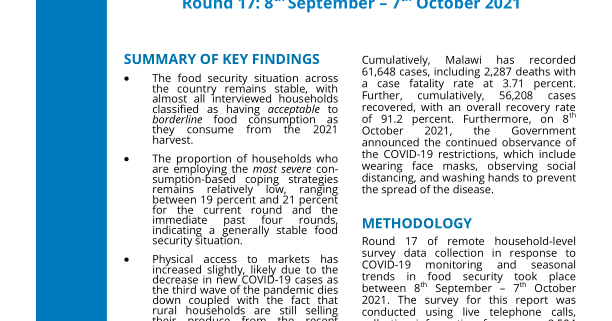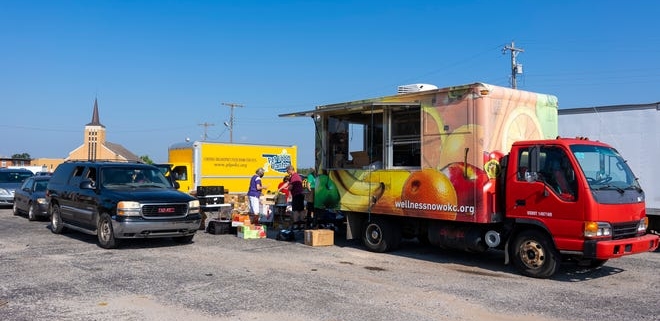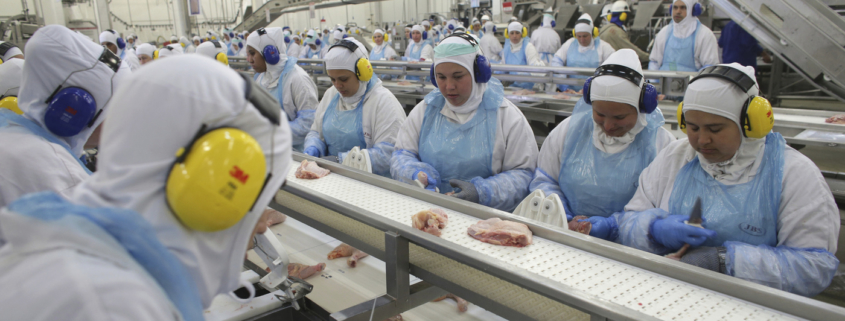Tag Archive for: Food
Malawi Household Food Security Bulletin | Mobile Vulnerability Analysis and Mapping (mVAM) on the Effects of COVID-19 in Malawi Round 17: 8th September – 7 th October 2021 – Malawi
/in Mobile Security
SUMMARY OF KEY FINDINGS
-
The food security situation across the country remains stable, with almost all interviewed households classified as having acceptable to borderline food consumption as they consume from the 2021 harvest.
-
The proportion of households who are employing the most severe consumption-based coping strategies remains relatively low, ranging between 19 percent and 21 percent for the current round and the immediate past four rounds, indicating a generally stable food security situation.
-
Physical access to markets has increased slightly, likely due to the decrease in new COVID-19 cases as the third wave of the pandemic dies down coupled with the fact that rural households are still selling their produce from the recent harvest.
BACKGROUND
During this reporting period, Malawi continued experiencing a decline in the number of COVID-19 cases, deaths, and admissions to Emergency Treatment Units (ETUs). As of the last day of this reporting period (7th October 2021), the Ministry of Health indicated that the country registered nine new COVID-19 cases in the past 24 hours, down from 952 cases during the peak of third wave on 22 July 2021.
Cumulatively, Malawi has recorded 61,648 cases, including 2,287 deaths with a case fatality rate at 3.71 percent.
Further, cumulatively, 56,208 cases recovered, with an overall recovery rate of 91.2 percent. Furthermore, on 8th October 2021, the Government announced the continued observance of the COVID-19 restrictions, which include wearing face masks, observing social distancing, and washing hands to prevent the spread of the disease.
METHODOLOGY
Round 17 of remote household-level survey data collection in response to COVID-19 monitoring and seasonal trends in food security took place between 8th September – 7 th October 2021. The survey for this report was conducted using live telephone calls, collecting information from some 2,504 households in all districts and major cities across the country.
The sample size was calculated based on the Integrated Food Security Phase Classification Technical Manual (Version 3.0) guideline of having at least 150 samples per strata. Additional details on this methodology are available in…
OKC Mobile Market continues fight for food security on Hunger Action Day
/in Mobile Security
The OKC Mobile Market visited OakRidge Health and Wellness Academy and South Rotary Park on Friday to distribute fresh produce to community residents.
The truck, a partnership between the Oklahoma City County Health Department and St. Luke’s United Methodist Church, provides free grocery items every Friday and final Saturday of every month.
The Mobile Market arrived at the Health and Wellness Academy at 9:30 a.m. Friday. By 9:45 a.m., lines had formed before food officially began being distributed at 10 a.m. By the end of the truck’s second stop at Rotary Park around 1 p.m., nearly 400 people had been served.
“(The health department) has often given out fresh produce at events and other activities, but the Mobile Market helps us provide sustainable access to these essential needs,” said OCCHD Community Outreach Coordinator Yanet Trejo, who regularly works at the market. “For people living with low income or limited transportation, they’ve come to depend on us visiting their neighborhoods and we’re happy to see they want healthy food.”
‘Food deserts’ in Oklahoma City:While food access improves in some parts of OKC, other areas still struggle
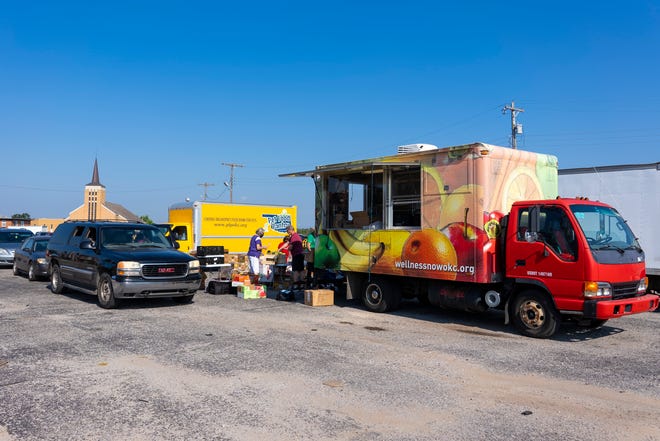
Friday was Hunger Action Day, where organizations across the country work to raise awareness of food insecurity and fight hunger.
Some Oklahoma City residents struggle with access to fresh and nutritious food, which is key to maintaining health and reducing illness. Recent reporting showed 119,000 Oklahoma County residents live in low-income, low access “food deserts,” while nearly 51,000 residents live in very low food security.
Candice Hillenbrand, St. Luke’s mission engagement director, said the Mobile Market was planned before the pandemic, but has become needed even more.
“We have seen the needs of our community increase as the lines have grown longer,” Hillenbrand said. “Our customers show up hours before our truck does just to ensure they have the best chance at receiving plenty of food for themselves and their families.”
More:First new full-size supermarket in decades for OKC’s east side to open Wednesday
Story continues below.
Since it began its weekly trips in April 2020, Mobile Market has distributed nearly 800,000 servings of…
The Food Supply Chain May Be Vulnerable To Cyberattacks : NPR
/in Computer Security
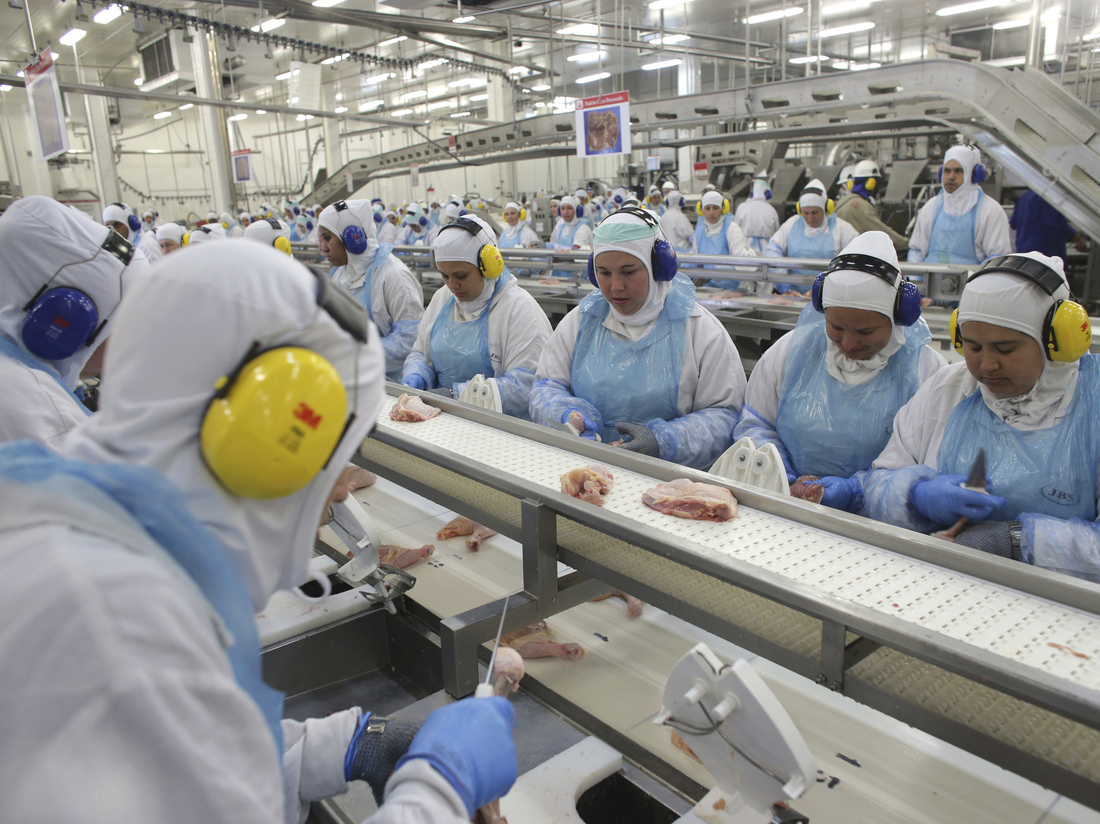
Workers prep poultry at the meatpacking company JBS in the Brazilian state of Paraná in 2017. A recent ransomware attack against JBS is raising concerns about cybersecurity at food companies.
Eraldo Peres/AP
hide caption
toggle caption
Eraldo Peres/AP
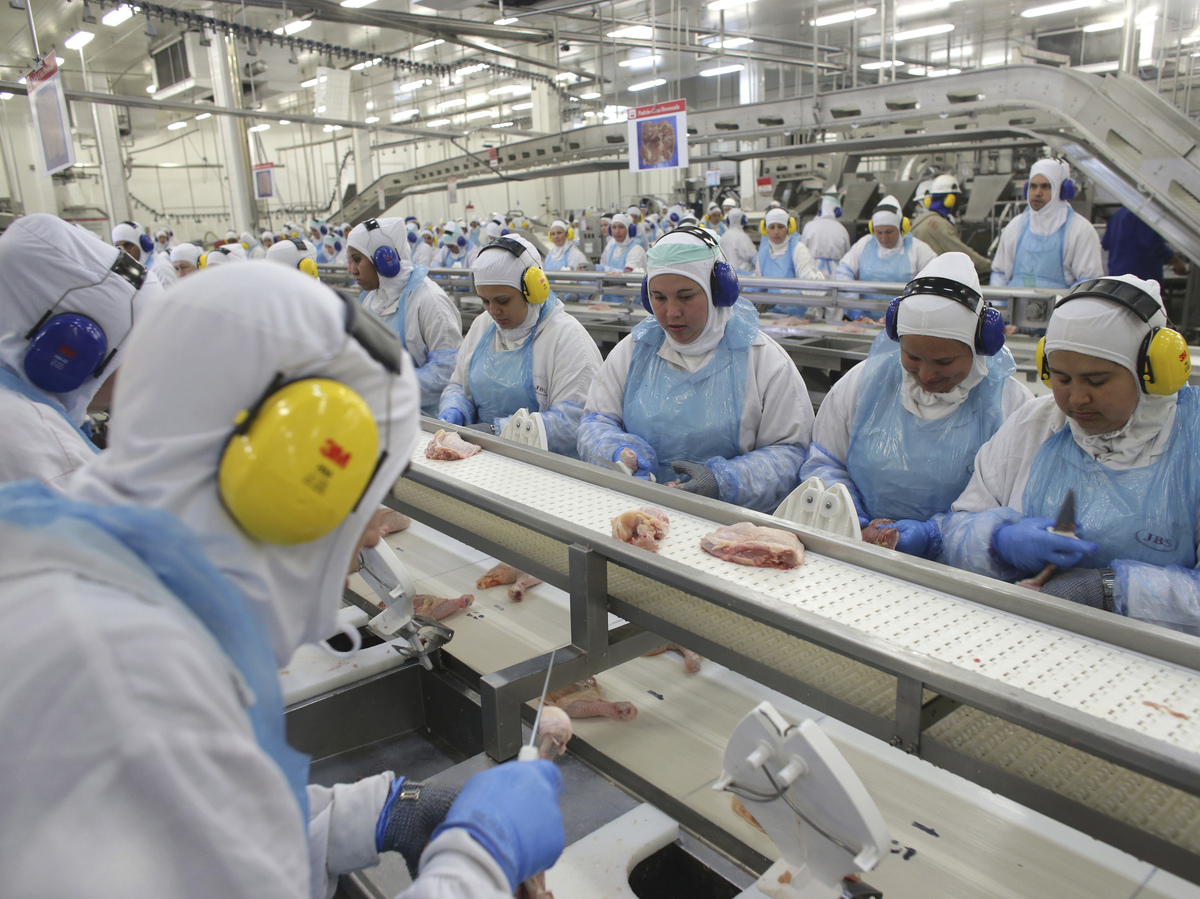
Workers prep poultry at the meatpacking company JBS in the Brazilian state of Paraná in 2017. A recent ransomware attack against JBS is raising concerns about cybersecurity at food companies.
Eraldo Peres/AP
A recent ransomware attack on the world’s biggest meatpacker is raising questions about cybersecurity in the food industry and about whether the industry is so concentrated in a few hands it is more vulnerable to sudden shocks.
The company, Brazil-based JBS, is a giant in the meat industry, with operations all over the world. The attack forced it to shut down several plants in the U.S. and Australia, which briefly rattled beef markets. But the plants soon came back online, and JBS downplayed the impact, saying it lost less than a day’s worth of production. The company admitted it had paid $11 million in ransom to the hackers.
But according to John Hoffman, a senior research fellow at the Food Protection and Defense Institute at the University of Minnesota, the attack has continued to reverberate. Hoffman says he’s receiving a wave of inquiries about cybersecurity from industry executives who previously were inclined to disregard his warnings.

“People just didn’t accept that it was that big of a risk,” he says. “I think that’s changed today. I’ve already heard from folks in government [that] it’s changed. People are looking at this and saying, ‘OK, we’ve got to do something.’ “
According to Hoffman, many food companies’ computer systems are vulnerable. “If you go…

